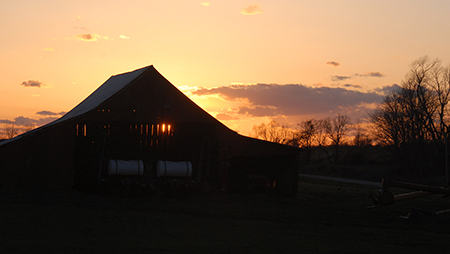Through all the infighting, partisan bickering and political grandstanding recently, farm policy has been the last stronghold of civility in Washington, D.C.
For the past 85 years Congress has written and passed a major agriculture policy law, referred to as a farm bill, about every five years. These bills address a huge range of issues from childhood hunger to corn prices, migratory bird habitat to urban gardening. This broad-ranging agenda has kept the House and Senate Agriculture Committees generally free of the partisanship and gridlock so paralyzing our nation’s capital in recent years. There have always been disagreements on crop risk management, hunger prevention programs and many other policy areas, but by and large the elected officials worked together peacefully to come to a mutual solution.
In 2018, this seems to have changed. The current farm bill expires at the end of September, and Congress has little time for action before election season brings lawmaking to a standstill. Unfortunately, the prospects of passing a full five-year farm bill have become mired in major partisan disagreements about changes to the Supplemental Nutrition Assistance Program (SNAP), formerly known as food stamps. Republicans insisted on adding work requirements to the program, which Democrats said amounted to a poison pill for the entire bill.
Democrats walked away from the table and refused to even participate in drafting the final House Agriculture Committee version of the bill, refusing to even offer amendments to change what they disliked. Republican members would not budge. On April 18 the bill passed committee on a 26-20 strict party-line vote. The full House of Representatives will now take up the bill, but partisan wrangling over this issue is already threatening to sink the legislation.
This is a particularly bad time for politics to inject uncertainty into farming. The U.S. Department of Agriculture recently forecast 2018 inflation-adjusted net farm income to be at its lowest point in 17 years. Most crop and livestock prices are entering their fifth consecutive year of consistently low prices. Farm land prices and input costs remain high, making margins extremely thin. Threatened Chinese tariffs already have many farmers very worried about further drops in the farm economy.
When the last farm bill expired in 2012, gridlock in the House of Representatives prevented enactment of a full five-year bill, instead forcing two separate one-year extensions before the current five-year bill was passed in 2014.
However, the typically more tight-knit Agriculture Committees did not devolve into an all-out political brawl like they have in 2018. Farm country has been losing population, and hence Congressional representation, for decades. If farm-state lawmakers cannot stick together on the bill that gives their economies some stability and predictability, it will get torn apart by the full Congress and potentially devastate the agricultural economy.
Hopefully cooler heads will prevail in the coming weeks and representatives can reach an agreement that allows a full five-year farm bill to pass. Rural members of both parties have long found ways to come together for rural America, and Congressional farm-state lawmakers should return to the civility that has worked so well for so long.


